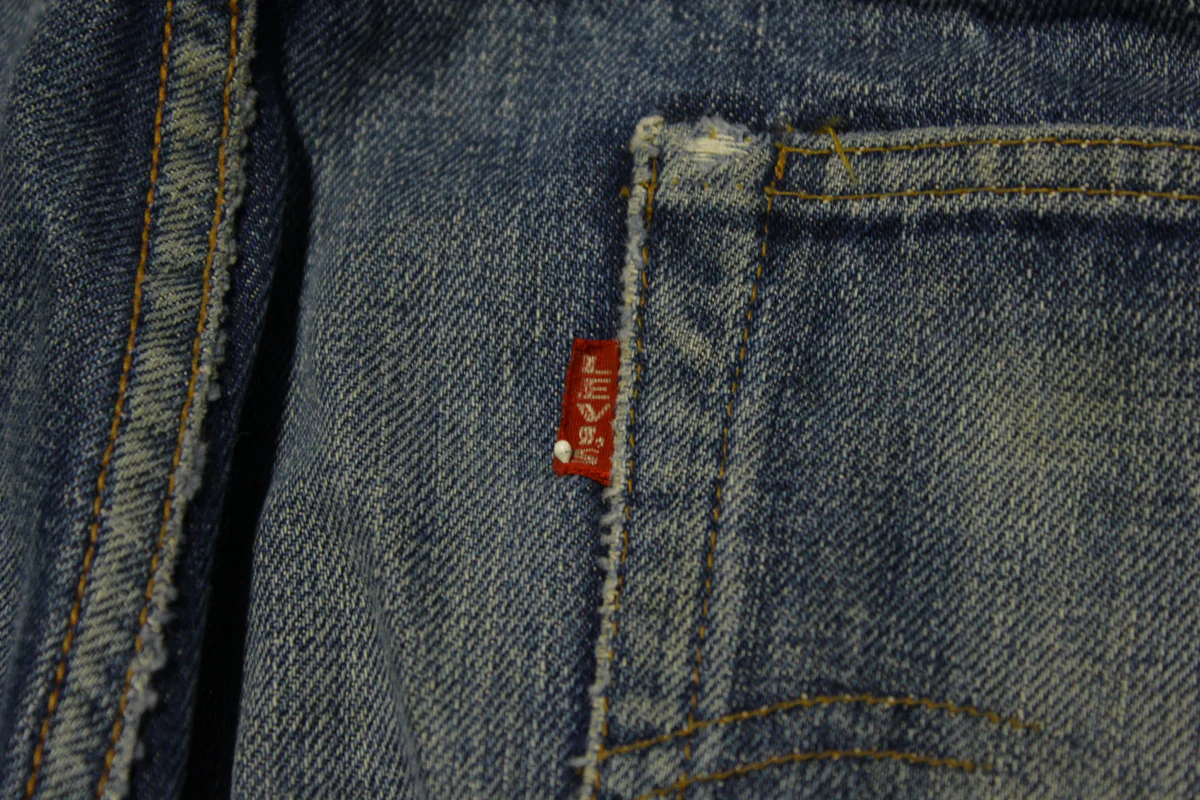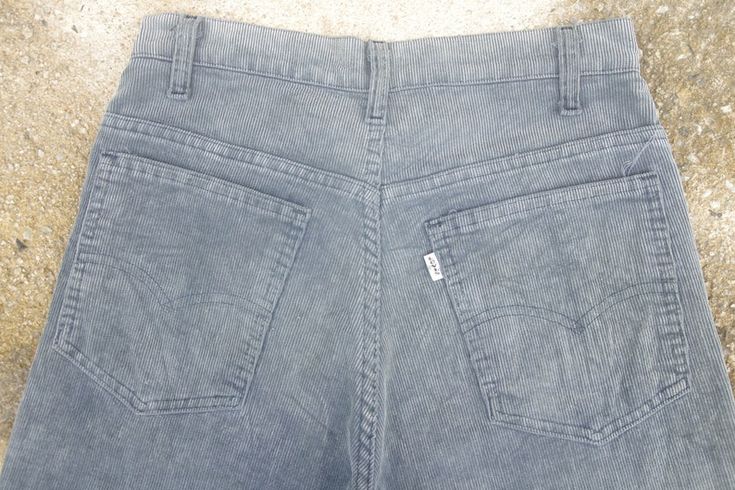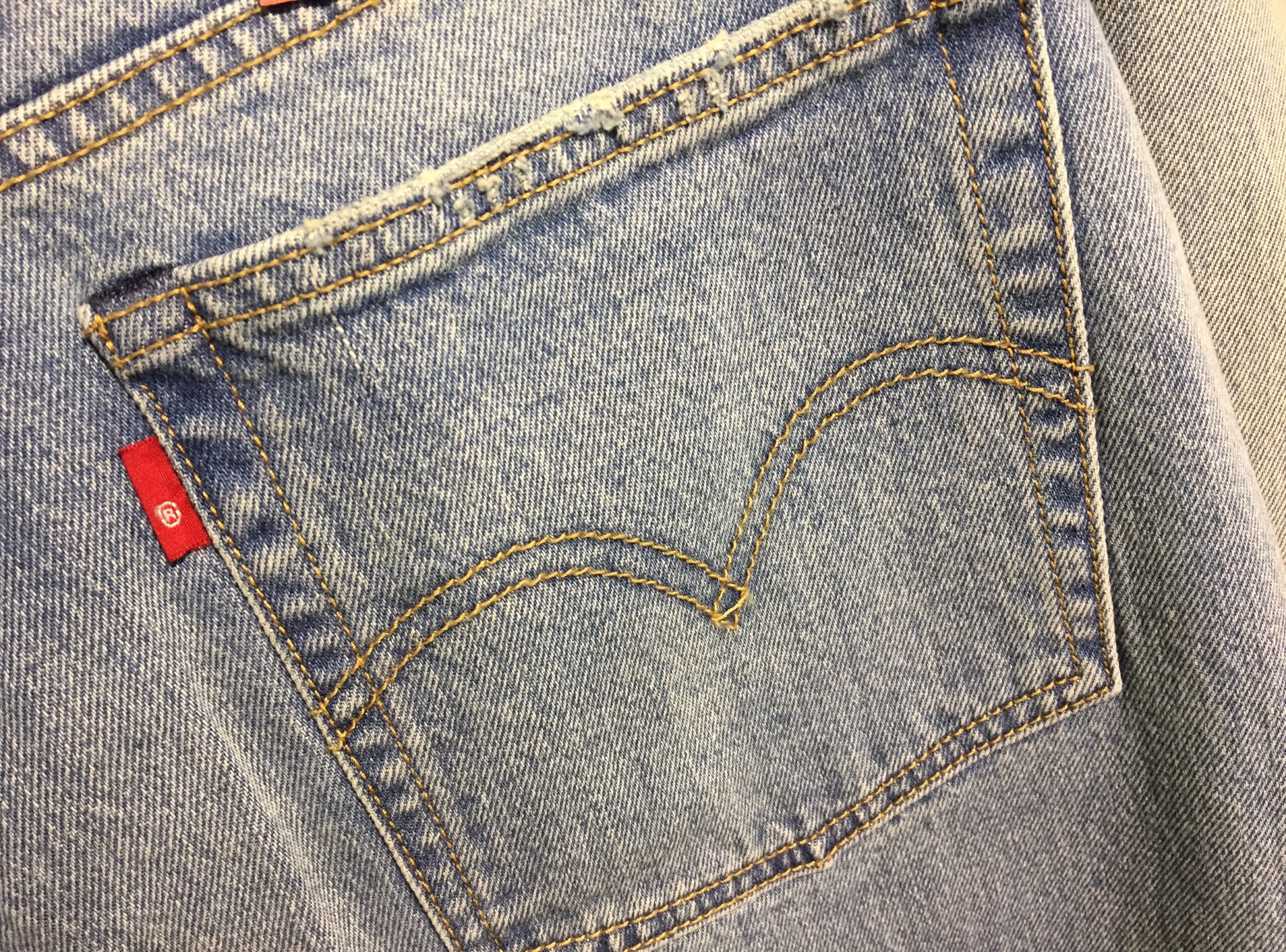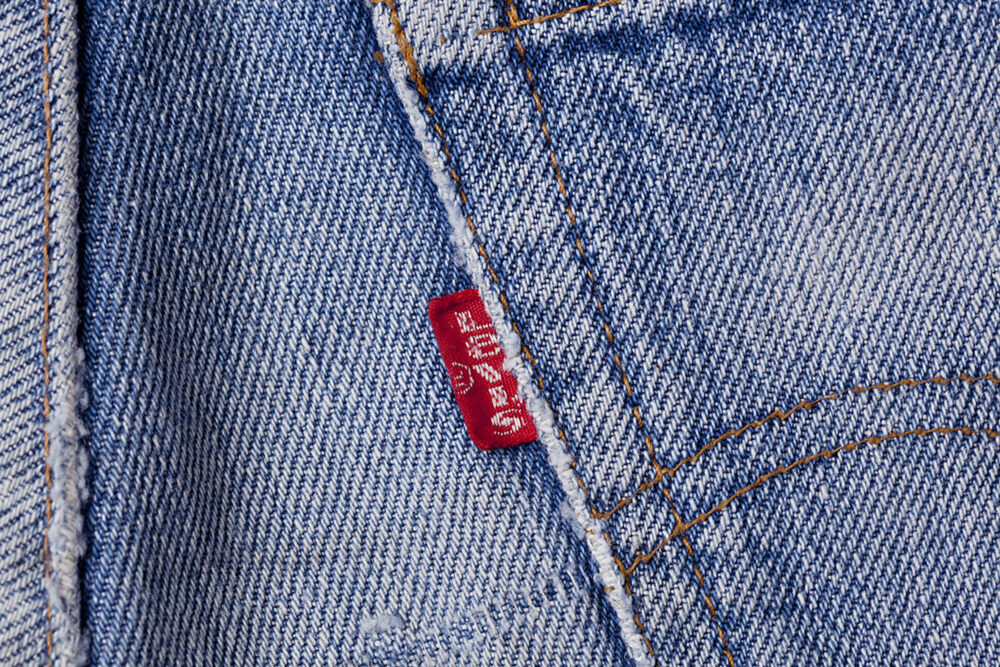Timeless Threads: What do Levi’s Tabs Really Mean?

Levi’s is by far the most popular denim brand in America and is arguably the brand of America. They also serve as one of the “gateway drugs” for people getting into vintage fashion. Easily found at the thrift or on second hand websites, they serve as an affordable and accessible way to find good quality denim.
If you happen to be starting out with getting into vintage Levi’s, you may be curious as to what the tab color on the back right pocket means. You may see red, orange, silver, black, white tabs, tabs with a big E, tabs with a little e, and even blank tabs – it can all get really confusing. Good thing for you, by the end of this article, you’ll know everything there is to know about all the tabs.
First, it’s important to know why Levi’s even uses tabs on the back right pocket in the first place. Well, it all comes down to differentiating themselves from other brands and making Levi’s easily identifiable. They initially did this with what’s known as the arcuate, which is the iconic stitching on the back pockets shaped like an arch. The arcuate was the sole indicator of Levi’s from 1873 until 1886, when they added their iconic back patch depicting two horses pulling on a pair of jeans, showing how strong Levi’s riveted jeans were. However, in the 90’s, other brands started copying Levi’s iconic arcuate, since it wasn’t trademarked and Levi’s felt like they needed another indicator. Thus, in 1936, Levi’s red tab was born.
Red Tab

Levi’s first introduced their signature red tab with white lettering on the left hand side of the back right pocket in 1936. To this day, it remains one of the most iconic brand indicators.
Double Sided Red Tab
In 1953, Levi’s replaced their single sided red tab with a double sided red tab. 99% of the Levi’s we come across today have a double sided tab on the back and if you happen to have a pair of denim with a single sided tab, it probably belongs in a museum.
White Tab

Levis introduced their white tab in 1960 to differentiate denim from non-denim, the latter being made with a white tab with black lettering instead of their usual red tab. Levi’s white tabs are mostly found on products made in the 60’s and 70’s. Personally, I have a pair of gray white tab corduroy 517’s that I love to death.
Black Tab

Levi’s introduced their black tab with gold lettering in 1964 with their new Sta-Prest anti wrinkle pants. Sta-Prest is a material that does not wrinkle and Levi’s marketed it as a pair of pants that you never needed to iron. Although Levi’s black tabs are still being used for black denim today, the tab is solely used for aesthetic purposes, since the Sta-Prest material was discontinued in the 80’s.
Orange Tab

Ah, the orange tab, a fan favorite nowadays. Orange tab Levi’s have gained popularity the last few years due to the orange tab being a relatively accurate indicator that the garment was made in the 60’s or 70’s. Levi’s started the orange tab line in 1969 as a dedicated tab to branch out into different silhouettes. They labeled these their “fashion cuts,” making silhouettes such as bootcut or flared jeans, which were gaining popularity at the time. They discontinued the orange tab in 1999, but most of the vintage pairs you’ll find floating around will be from the 70’s. Besides the tab, there are some differences between orange tab jeans and classic red tab jeans, such as orange tabs having one less rivet on the pockets, less stitching on the pockets, and 7 belt loops compared to the 5 on red tabs.
Silver Tab

Silver tab Levi’s were brought into production in 1988 to accommodate the baggy trend at the time. Silver tabs featured much baggier fits and were at the forefront of grunge denim that were popular throughout the late 80’s and 90’s.
Big E
Big ‘E’ pictured on left and little ‘e’ pictured on the right
Chances are if you look at the tab on a pair of Levi’s you have, it has a small ‘e’. The Levi’s tab changed the font from all uppercase to all lowercase in 1971. Although all of the letters changed, the only noticeable one is the ‘e’, so pairs of pants made pre-1971 are commonly referred to as “Big E” pairs. Big E pairs are pretty valuable today, ranging from a few hundred bucks to thousands of dollars, depending on the exact era they are from.
Blank Tab

If you happen to see a pair of Levi’s with a blank tab instead of the classic “levi’s”, don’t worry, they aren’t fake. Levi’s has to put a blank tab on 10% of their garments in order to protect the trademark of the pocket tab. It is blank because they need to show that the tab itself is trademarked and not the lettering.
Well, that’s all there is to know about the color of Levi’s tabs. The history of Levi’s is fascinating and lengthy, so in the coming weeks we’ll dive into other topics, such as how to date Levi’s and Levi’s jackets. Until then, look out for some steals and get really good at spotting that big E.




